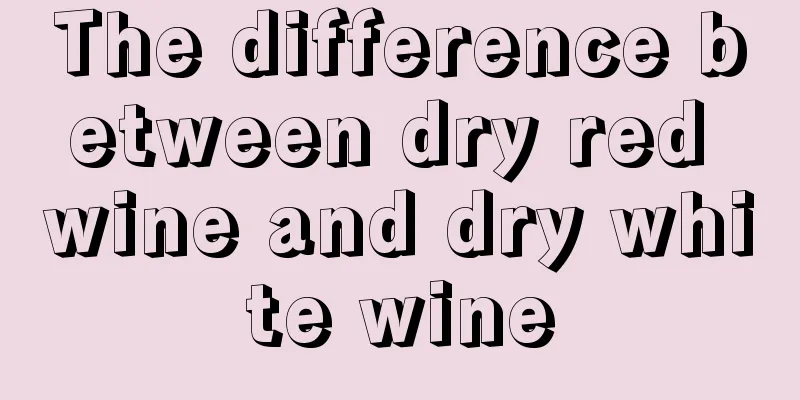The difference between dry red wine and dry white wine

|
Red wine is a relatively common type of alcoholic beverage, and it is also a type of alcoholic beverage that has certain benefits for human health. Of course, red wine is just one category of wine. There are many specific types of red wine. For example, dry red and dry white are two of the more common types of red wine. There are certain differences between the two types of wine in terms of brewing technology, color, and nutritional value.
In short, "dry red" is made by fermenting grapes with red skin and white flesh or both red skin and flesh with the skin on, fermenting the skin and juice together, and then separating and aging them; "dry white" is made by using white grapes or wine grapes with light-colored skin. After the skin and juice are separated, the juice is taken for fermentation and brewing. 2. Color Since "dry red" is made by fermenting grapes with red skin and white flesh or both red skin and flesh with the skin on, the wine contains colored substances from the skin or flesh, making "dry red" mainly red, and the colors are generally dark ruby red, ruby red, purple red, dark red, brown red, etc.; "dry white" is made from white skin and white flesh or red skin and white flesh grapes that are peeled and fermented, and its color is mainly yellow, mainly nearly colorless, slightly yellow with green, light yellow, straw yellow, golden yellow, etc. 3. Nutritional value The proportion of vitamin B, riboflavin, niacin, pantothenic acid and pantothenic acid contained in "dry red wine" is higher than that in "dry white wine". In terms of the tasting period, since "dry white" is brewed only with juice, its tannin content is relatively low, while "dry red" is brewed with peel, pulp and juice together, its tannin content is relatively high. Therefore, in general, "dry red" is more stable than "dry white" and has a longer tasting period. 4. Raw materials "Dry red" is made by fermenting a mixture of skins (including skins, seeds and stalks) and grape juice, while "dry white" is fermented with clarified grape juice. Therefore, during the fermentation process of red wine, alcohol fermentation and solid matter soaking exist at the same time. The former converts sugar into alcohol, and the latter dissolves phenolic substances such as tannins and pigments in the solid matter into the wine. Therefore, the color, smell, taste, etc. of red wine are closely related to phenolic substances. |
<<: Is Purslane cold in nature?
>>: What are the functions of the right brain
Recommend
How should lung cancer patients be cared for? Four aspects of care should be provided for lung cancer patients
Lung cancer is very harmful to health. One of the...
How long after a meal is the best time to brush your teeth?
As people in modern society have higher and highe...
Is tea alkaline or acidic?
It is rare to hear that tea is a weakly alkaline ...
Pancreatitis classification
The pancreas is an organ that protects immunity, ...
The difference between sunscreen and sunblock lotion
In the hot summer, many people are reluctant to g...
Does the water light needle have a moisturizing effect?
Although various injections are very popular on t...
How to quickly reduce the swelling and pain of hemorrhoids
Hemorrhoids are a relatively common anorectal dis...
What is the cause of skin cancer
The best time to treat cancer is in the early sta...
What to do if you are allergic to egg white
Allergies are caused by different allergens becau...
How much tg is considered a recurrence of thyroid cancer? How to treat thyroid cancer symptomatically?
In clinical practice, we mainly monitor tumor rec...
The young man has dull pain in his left kidney
If young people do not pay attention to maintenan...
What is the method to remove scale from a thermos bottle
If you do not pay attention to timely cleaning of...
What causes prostate cancer? How does prostate cancer develop in the human body?
In modern society, many men are troubled by prost...
Complications of deep vein thrombosis in lower extremities
Complications of deep vein thrombosis in the lowe...
Can I drink milk on an empty stomach and what should I pay attention to
I don’t know if we have ever drunk milk on an emp...









